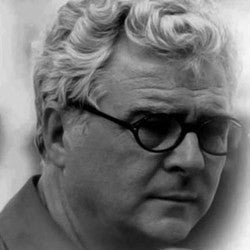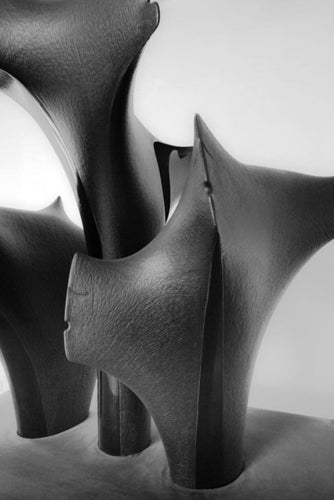Son of Guglielmo, he was born in Murano on 24 February 1931.
From a very young age, still a student, he breathes the scent of glass in the family furnace and learns to know all its secrets, driven by a curiosity and an inventiveness that will bear fruit well, when, in 1952, when his father died, he founded , with his brother Gino and uncle Oreste , Vetreria Vistosi .
Luciano understands in advance the success of the design object and, by creating himself and involving signatures of considerable prestige such as those of Magistretti , Sottsass , Zanuso, Aulenti , and many others, he inaugurates a happy production season that successfully projects Venetian glass towards a stage no longer and not only for tourism, but rather for a fortunate symbiosis between modern refinement and creativity.
The inventive freshness that is found in the lamps, in the cups and in general in the objects of use successfully created by Luciano Vistosi until the 1970s, underlining what is the true outcome of his talent.
Sculpture. His first personal exhibition, in 1968, at the Galleria Alfieri in Venice, revealed to the public an artist already mature and rich in a new poetic and of great plastic value. Through the glass sculptures he exhibits here, the refinement of his technique emerges and at the same time his overwhelming love for this material, love that will never abandon him. In the same year he made a solo show in San Francisco, and in the following decade others again in Venice, Cologne and Düsseldorf.

Stand at the Museo del Vetro
At the beginning of the 1980s the Museum of Modern Art of Ca’Pesaro in Venice dedicated to him a great staff that further decreed his success, both public and critical. Followed closely by exhibitions in Madrid, Florence, Segovia and Milan. At the same time, since 1973, he has been invited to collective exhibitions all over the world, in the most prestigious museums and galleries: from the Landesmuseum of Kassel to the Hankyu Gallery in Osaka, from the Hokkaido Museum of Modern Art in Sapporo to the Brinkmann Gallery in Bonn, from the National Building Museum in Washington to the Kunsthaus in Cologne, and many more.
After years of study and design, in 1985 he created, entirely in glass, the model for the "Ponte dell'Accademia" which was exhibited at the Tsukuba World Expo in the spring of the same year. Starting from this provocative and revolutionary idea, it takes shape a decade later, the decidedly more feasible and concrete project, for a bridge destined to replace the wooden one at the doors of the Venice Arsenal: its model, of about eight meters, is exhibited with enormous success, at the Aichi World Expo in 2005. In 1986 he was invited to the XLII International Art Biennale of Venice and in 1989 to the 20th Bienal Internacional of San Paolo of Brazil.
In 1994, for the Basilica of San Marco, he created a glass cross with a green lagoon color supported by a bronze stele and made up of a hundred square blocks, which was placed in the ancient crypt below the Altar Maggiore in December of that year. A reserved and reserved man, Luciano Vistosi transfuses into his art, by counterpoint, a vital energy that perhaps amazes himself. His ability to capture light has more pictorial than sculptural comparisons.
The material forms itself in his hands with a lightness that brings us back to the pure lines of artists of the past who have made formal elegance a distinctive sign; and at the same time its ability to capture the light makes it very modern and current and dresses its works - be they "the sets", angels of subtle transparency, or "glass quarries", ancestral boulders expertly tormented by his hands, or the "constructions of light", like the superb Ponte dell'Arsenale, of a wisely evocative refractivity.
Although he had been struck by a serious illness in the late 1990s, Luciano Vistosi never interrupted his artistic activity, continuing to create his sublime and delicate flashes of light in his Murano studio-atelier, with strength and generous character until last days of life.
He died in Venice on May 14, 2010.
"In our house I rarely heard of sculpture: we only talked about painting. And yet the forms were there: they were born every day in the furnace. I could go so far as to say that I always thought three-dimensionally, that is, plastically ”.
Luciano Vistosi, 2003
Credits




Hinterlasse einen Kommentar
Alle Kommentare werden vor der Veröffentlichung geprüft.
Diese Website ist durch hCaptcha geschützt und es gelten die allgemeinen Geschäftsbedingungen und Datenschutzbestimmungen von hCaptcha.